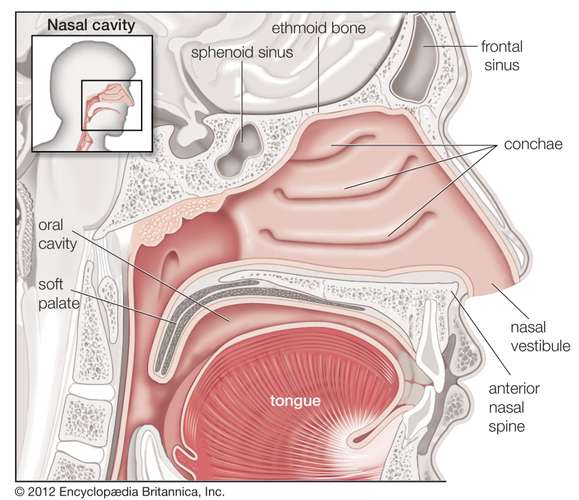
Flawed Reasoning:The post concludes that the swab, when introduced far into the nose, may reach the blood-brain barrier. However, the blood-brain barrier is a closed network of blood vessels that cannot be reached simply by introducing a swab into the open nasal cavity and touching the back of the nasopharynx.

RECLAMACION: Nasal swabs used for COVID-19 tests reach the blood-brain barrier and may damage it...“The blood brain barrier is exactly where the swab test has to be placed”
REVIEW
A Facebook post shared more than 16,000 times claims that the nasopharyngeal swab (nasal swab), which is widely used to collect biological samples for testing for active SARS-CoV-2 infection (the virus responsible for COVID-19), scrapes and damages the blood-brain barrier (BBB) leading to serious health problems. This claim is incorrect because it is anatomically impossible.
The BBB is composed of specialized endothelial cells that form the walls of blood vessels in the brain[1]. In contrast, the blood vessels located in the tissues of the nasal cavity and nasopharynx are not made of cells that form a BBB. The structure and function of the cells of the BBB ensure tight regulation of the exchange of molecules between the circulating blood and neurons in the brain. This is crucial to the proper functioning of the brain. Any disruption to the BBB, which can result from stroke or neurological disorders, can lead to severe dysfunction of the central nervous system[1]. Likewise, any medical intervention that causes damage to the BBB could result in neurological dysfunction.
The nasopharyngeal swab, commonly referred to as a nasal swab, has been widely used during the COVID-19 pandemic[2]. During testing for the presence of active SARS-CoV-2 infection, the swab is introduced into the nose and through the nasal cavity until it reaches the nasopharynx behind it. The swab is then pressed against the back of the nasopharynx and rotated to obtain a sample of nasal mucous which in infected individuals would contain large amounts of virus[3]. While the procedure causes discomfort and may even look alarming, it is anatomically impossible to reach the BBB during this procedure.
As shown in Figure 1, the nasopharynx is separated from the brain by the sphenoid bone and sinus cavities. It is therefore anatomically impossible for the swab to reach the brain without perforating several layers of hard tissue, which is physically impossible using a testing swab considering the materials used to make them and the force needed to perforate the layers of tissue.

In summary, the brain and the nasopharynx are separated by several layers of biological tissues that cannot be perforated using swabs. In addition, the brain’s network of blood vessels forms a closed circuit, which is not accessible through the nasal cavity and nasopharynx.
READ MORE
This claim has also been debunked by USA Today, Politifact, and many others.
REFERENCES
- 1 – Daneman and Prat. (2015) The Blood–Brain Barrier. Cold Springs Harbor Perspectives in Biology.
- 2 – Tagliabue et al. (2020) Nasopharyngeal swabs during SARS-CoV-2 pandemic: a role for the otolaryngologist. European Archives of Oto-Rhino-Laryngology.
- 3 – Kaufman et al. (2020) How to Perform a Nasopharyngeal Swab – An Otolaryngology Perspective. The American Journal of Medicine.


